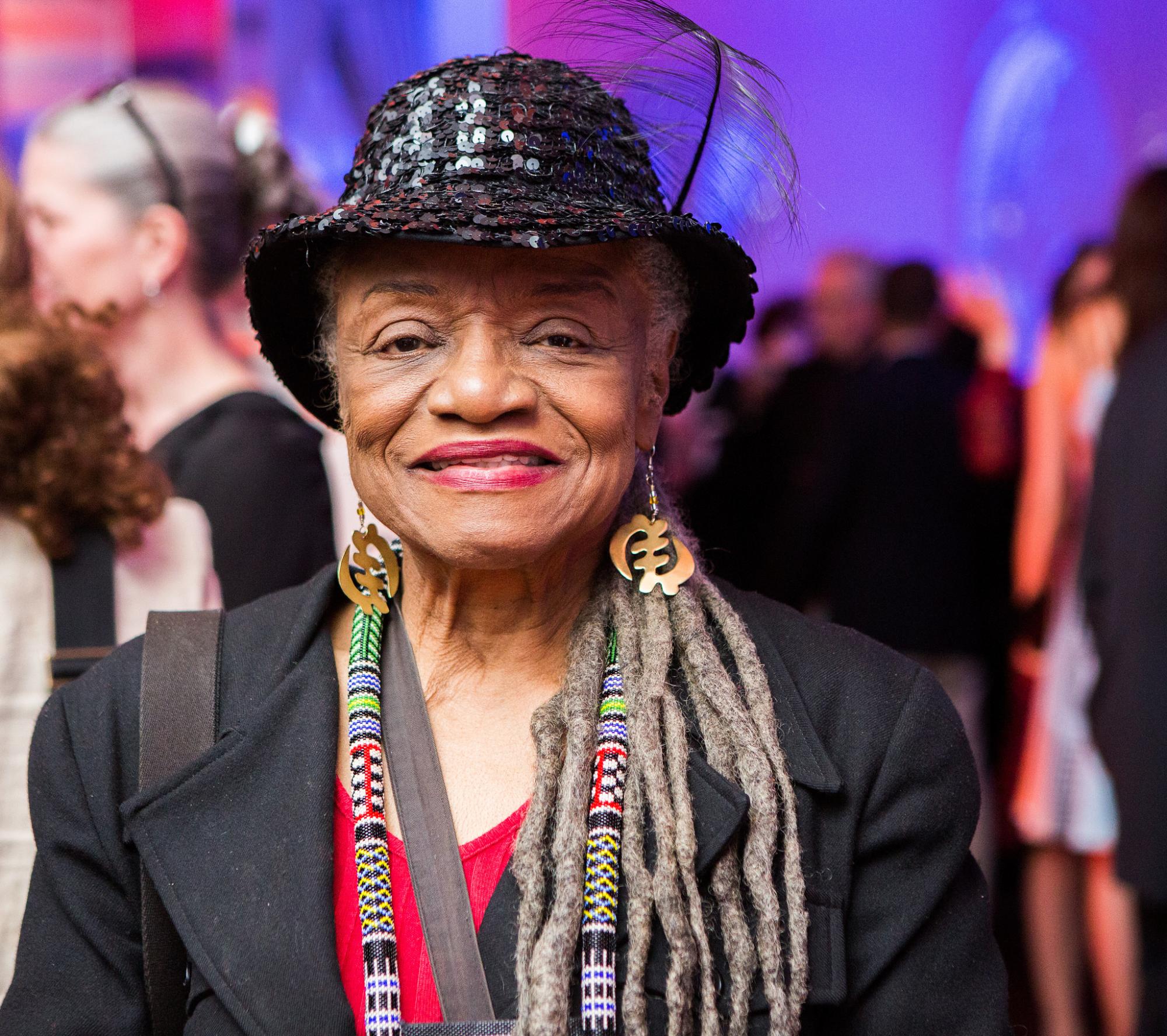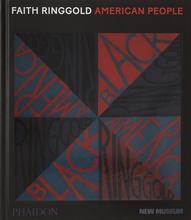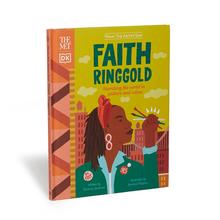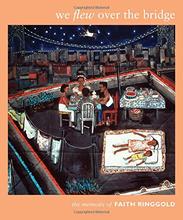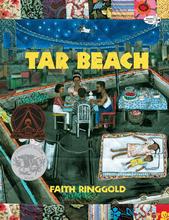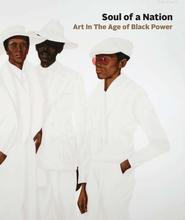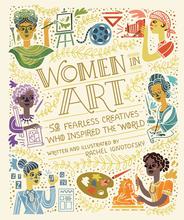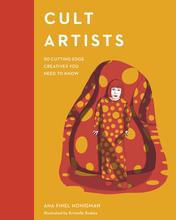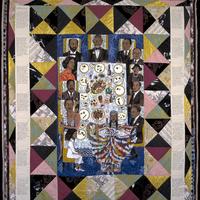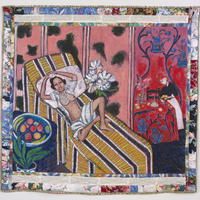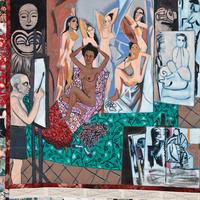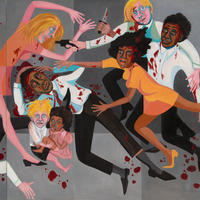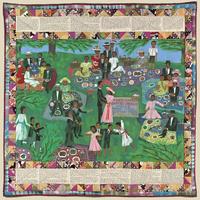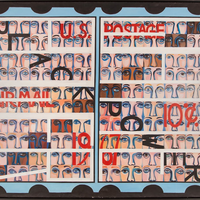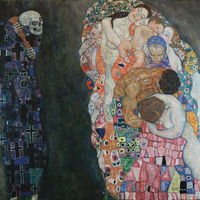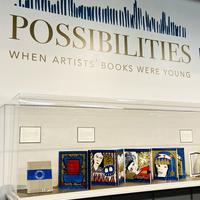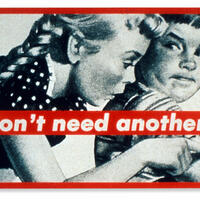More about Faith Ringgold
- All
- Info
- Shop
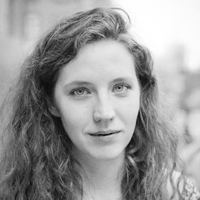
Contributor
“How dare you tell artists what they can do? That’s the beginning of some really bad funk—bad, bad, bad.”
Faith Ringgold’s art and activism helped push American culture through some major growing pains. She saw the rise of the Civil Rights and women’s liberation movements, and tirelessly confronted racial and gender inequality in the art world and beyond.
Ringgold’s work wasn’t political from the start. As a young black woman beginning her career in the mid 20th century, you can imagine that she faced some major hurdles on her way to success. Beyond restrictions on which colleges she could attend, finding gallery representation seemed a near impossible feat. She and her second husband (who carried her paintings for her) would bounce from appointment to appointment with prospective gallerists, hoping to get a lucky break, but getting nowhere.
In one meeting, an art dealer implied the irrelevance of the floral still life paintings Ringgold had brought to show. At first affronted, Ringgold eventually understood that this gallerist had hoped to see more social commentary in her art, so she committed her work to the urgent political current of the early 1960s. Racism and sexism were now part of a national dialogue, and Ringgold was badass enough to outspokenly stand up for justice.
The opening of Ringgold’s first solo show in 1967 was a smashing success, but not for the faint of heart. One of the four hundred-something attendees took one look at a painting depicting a particularly gory race riot, let out a yelp and hopped straight back onto the elevator. Can’t say that her flowers would have evoked such a reaction.
Ringgold joined in protesting elitism in the art world by demanding better representation of women and artists of color at the 1970 Whitney Biennial. She and fellow protesters mischievously dissented by leaving eggs and sanitary products around the museum stamped with the the phrase “50% women.” Just to f*ck with people, the protesters also carried small whistles with them into the museum, which they would blow loudly in remote galleries and stairwells. Before alarmed museum personnel could rush to the scene, Ringgold and her pals would pocket the whistles and innocently wander away. Of course, mind games are an excellent way to fight the man.
Occasionally, Ringgold’s activism got her in trouble with the law. She was arrested at the opening of “The People’s Flag Show,” an exhibition she had helped to organize in support of artists and curators whose work “desecrated” the American flag in the name of free speech.
Sources
- “Faith Ringgold,” Guggenheim.org. Accessed 12/28/16. https://www.guggenheim.org/artwork/artist/faith-ringgold
- Andrew Russeth. “The Storyteller: At 85, her star still rising, Faith Ringgold looks back on her life in art, activism, and education.” ArtNews, March 1st, 2016. Accessed 1/1/16. http://www.artnews.com/2016/03/01/the-storyteller-faith-ringgold/
- Andrew Russeth. “‘Freedom of Speech is Absolutely Imperative’: Faith Ringgold on her early art, activism at the Museum of Modern Art.” ArtNews, December 8th, 2016. Accessed 12/28/16. http://www.artnews.com/2016/12/08/freedom-of-speech-is-absolutely-impera
Featured Content
Here is what Wikipedia says about Faith Ringgold
Faith Ringgold (born Faith Willi Jones; October 8, 1930 – April 12, 2024) was an American painter, painting on different materials including fabric, author, mixed media sculptor, performance artist, and intersectional activist, perhaps best known for her narrative quilts.
Ringgold was born in Harlem and earned her bachelor's and master's degrees from the City College of New York. She was an art teacher in the New York City public school system. As a multimedia artist, her works explored themes of family, race, class, and gender. Her series of story quilts, designed from the 1980s on, captured the experiences of Black Americans and became her signature art form. During her career, she promoted the work of Black artists and rallied against their marginalization by the art museums. She wrote and illustrated over a dozen children's books. Ringgold's art has been exhibited throughout the world and is in the permanent collections of The Guggenheim, the Metropolitan Museum of Art, the Museum of Arts and Design, the Philadelphia Museum of Art, and the Schomburg Center for Research in Black Culture.
Check out the full Wikipedia article about Faith Ringgold

